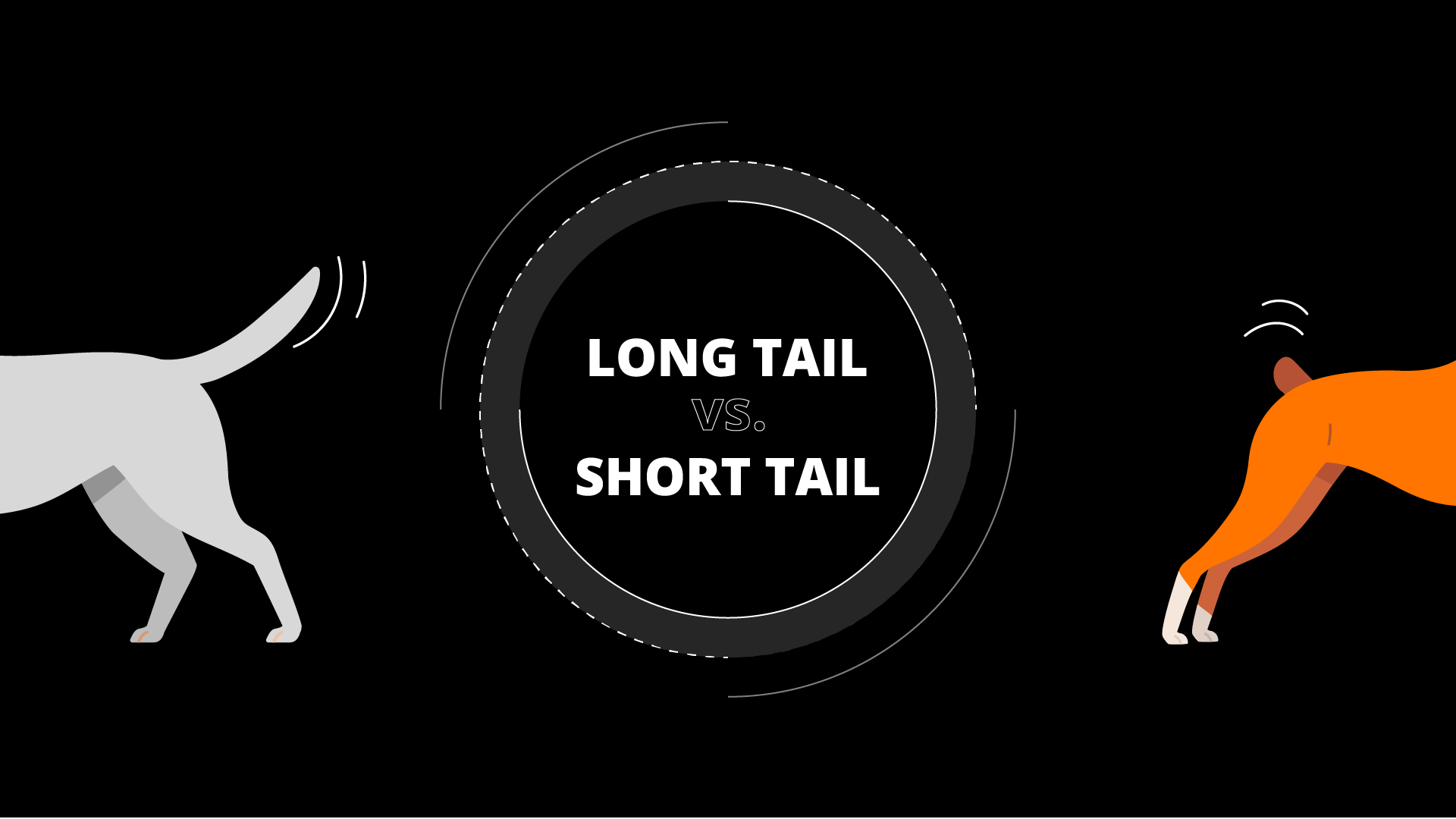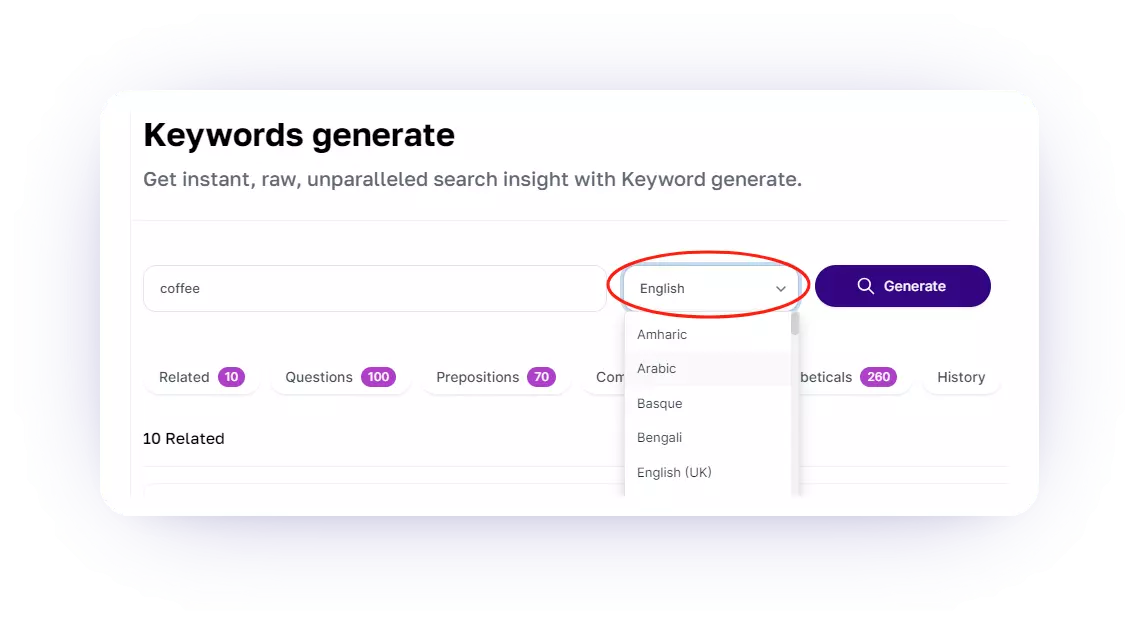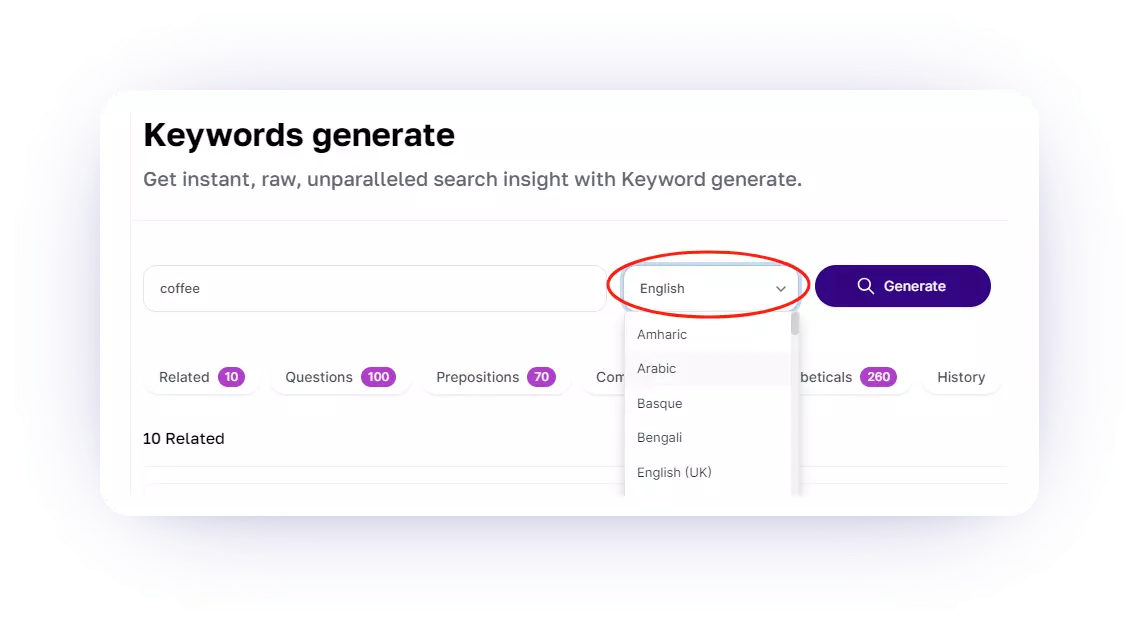
The difference between long-tail vs short-tail keywords hinges on their popularity. Short-tail keywords attract a large number of searches, whereas long-tail keywords are sought after by a comparatively smaller audience.
Both types have their unique advantages and applications, and understanding the differences can significantly impact the success of an SEO strategy.
Keep reading and you will find out more!
What is a Short-Tail Keyword?
A short-tail keyword, also referred to as a 'head term,' is a general search term typically comprising 1-3 words, addressing a broad topic. These keywords generally boast higher search volume compared to their long-tail counterparts, attracting a larger number of website visitors.
While head terms can generate significant traffic, the quality may not be optimal, as these are generic searches that might not align with the specific user intent for your product or service.

This misalignment can result in lower conversion rates and an elevated bounce rate. Additionally, short-tail keywords face intense competition, posing challenges for ranking, particularly for websites with a lower domain authority.
It's crucial to bear in mind that various ranking factors contribute to a site's performance, and keywords are just one aspect of this equation.
Therefore, developing a comprehensive SEO strategy that encompasses all critical elements is essential for achieving sustained success.
Features of Short-tail Keywords
Below are the most common features of short tail keywords.
1. High Search Volume
Short tail keywords generally attract a higher search volume due to their broad nature. Users often start their search with generic terms when they are in the early stages of information gathering.
2. Intense Competition
With high search volume comes high keyword difficulty. Many businesses vie for the top positions on search engine results pages (SERPs) for these popular keywords, making it challenging to secure a prominent ranking.
3. Top-of-Funnel Traffic
Short tail keywords are effective for attracting a large audience, but they often target users at the top of the sales funnel. Visitors may be in the early stages of research and not necessarily ready to make a purchase.
4. Brand Visibility
Using short tail keywords can enhance brand visibility and awareness. However, the challenge lies in standing out among numerous competitors also targeting the same keywords.
What is a Long-Tail Keyword?
Long-tail keywords, in contrast to short-tail counterparts, exhibit lower search volume, categorizing them as the 'less popular' search terms. Despite this, they offer greater specificity, furnishing search engines with more detailed information and clearly articulating user intent.
Consequently, although each long-tail keyword may attract fewer site visits, their specificity yields more targeted results, aligning closely with user intent and, in turn, attracting higher-quality traffic that is more likely to convert. Typically, a long-tail keyword comprises approximately three words or more.
It is noteworthy that a significant majority of search terms fall into the long-tail category, with 92.42% of keywords registering ten searches or fewer per month.
Thus, understanding and effectively incorporating long-tail keywords into your on-site content is crucial for optimizing your digital presence.
Wondering how to find long tail keywords? Then Niche Finder's Keyword Generate can be one of the best tools! You can dedicate languages, and find hundreds of related keywords easily.


Features of Long-Tail Keywords
Below are common features of long tail keywords.
1. Lower Search Volume, Higher Conversion
Long tail keywords have lower search volume compared to short tail keywords, but they often lead to higher conversion rates. Users searching for specific phrases are usually closer to making a decision, making them valuable leads.
2. Reduced Competition
Due to their specificity, long-tail keywords face less competition.
This provides an opportunity for businesses to rank higher on SERPs, especially if they cater to niche markets.
3. Intent-Focused Traffic
Long tail keywords are often associated with users who have a clear intent. Whether it's purchasing a product or seeking in-depth information, these users are more likely to take the desired action.
4. Enhanced SEO Strategy
Incorporating long tail keywords into an SEO strategy allows businesses to create more targeted and relevant content. This not only attracts the right audience but also signals to search engines that the content is highly relevant to specific queries.
How to Choose Between Long-Tail and Short-Tail Keywords?
While the debate between long tail and short tail keywords has been ongoing, many SEO experts advocate for a balanced approach. Integrating both types of keywords in a comprehensive strategy can yield optimal results.
Targeted Landing Pages
Create dedicated landing pages optimized for short tail keywords to capture broad audience attention.
Simultaneously, develop content-rich pages targeting long tail keywords to attract users with specific needs.
Content Diversity
Diversify your content strategy by incorporating a mix of short and long tail keywords.
This not only broadens your reach but also establishes authority in your industry.
Understanding User Behavior
Analyze user behavior to identify the stages of the customer journey.
Short tail keywords may be more effective for brand visibility and initial engagement, while long tail keywords can be instrumental in converting leads into customers.
Data-Driven Decision Making
Regularly analyze performance metrics and user behavior to refine keyword strategies.
Use tools like Google Analytics and keyword research tools to identify trends and opportunities.
Why Are Both Types of Keywords Important?
Both short-tail and long-tail keywords come with their own sets of pros and cons when incorporated into your keyword research strategy.
Short-tail keywords offer the advantage of reaching a broad and diverse audience, elevating your brand awareness, and driving higher traffic volumes. However, the downside includes increased competition, higher costs, and a lower likelihood of conversion.
On the other hand, long-tail keywords assist in targeting a more specific and qualified audience, enhancing your relevance and authority, and ultimately leading to increased conversions.
Nevertheless, the challenges associated with long-tail keywords involve their comparative difficulty in discovery, research, and optimization.
Final Words on Long Tail vs Short Tail Keywords
In the dynamic world of SEO, the effectiveness of keywords depends on various factors, including the nature of the business, target audience, and overarching marketing goals.
Rather than viewing long-tail and short-tail keywords as competing entities, businesses should embrace a holistic approach that leverages the strengths of both.
Ultimately, the key to a successful SEO strategy lies in understanding the nuances of your target audience and crafting a keyword strategy that aligns with their needs and behaviors. .

